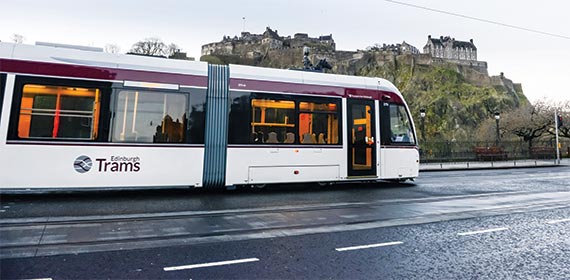 Scotland’s capital has been something of a laggard on city deals, having merely secured a promise from chancellor George Osborne to negotiate one, while Glasgow, Aberdeen and even Inverness have them in place, though not Dundee.
Scotland’s capital has been something of a laggard on city deals, having merely secured a promise from chancellor George Osborne to negotiate one, while Glasgow, Aberdeen and even Inverness have them in place, though not Dundee.
The proposed deal area (see box opposite) takes in a substantial chunk of south-east Scotland. This scale may itself be a problem, as the deal would sprawl beyond the city into hinterlands that include former mining areas in Fife, the deeply rural Borders, former new towns such as Livingston and Glenrothes and Edinburgh’s commuter belt.
To be accepted, everybody has to get something out of it. There will surely be a lot of negotiations – and not just with the UK and Scottish governments, but among the sponsoring councils – before a deal can be done.
Indeed, a report in May by Audit Scotland, the country’s public audit body, noted the Edinburgh bid would include projects for the development of strategic innovation centres and affordable housing, but “the projects will not be prioritised until the political priorities of the six councils are aligned and the affordability of these projects reviewed”.
The only projects committed, auditors said, were the Edinburgh tram extension to Leith, where plans are in place, and the Edinburgh BioQuarter, which is under construction.
The councils say any deal should accelerate growth across the finance, science, culture, leisure, learning and technology sectors to which list the local property industry adds the need for more housing sites to serve Edinburgh, including in areas opened up by new transport infrastructure.
They want an integrated regional infrastructure strategy backed by a £1bn fund, from which they estimate an additional £3.2bn of private sector investment could be leveraged, providing a 5% uplift to the local economy.
There is little concrete detail beyond that yet and CBRE’s Scotland chairman Doug Smith is sceptical.
“There is a risk that city deals could disappoint across all Scottish cities if there is infrastructure but nothing to make development viable,” he says. “They are focusing on the shortage of infrastructure and that is absolutely necessary, but it fails to consider whether development can follow because of viability issues, and there needs to be some parallel intervention.”
Others are more sanguine. Keith Dobson, head of Savills’ Edinburgh office, believes all infrastructure, including things such as broadband, is important.
He says: “IT companies are looking to expand and that industry is starting to balance the established financial services sector, they want small accommodation when they start and then larger premises when they grow.”
Dobson hopes investment through the city deal will open up non-traditional development locations beyond the city centre, such as by the Gateway project – an interchange between rail and the Edinburgh tram at Gogar near the airport, in southern Fife – towns along the Borders rail line, and in Livingston.
JLL director Cameron Stott is also looking to new locations, arguing that most sites that can be developed in central Edinburgh over the next three to five years are already in progress.
“I hope the city deal will be about sites that can be developed over the next five to 10 years. There is a lot of potential to the west of the city around the airport, the tram route and the new railway station for the gateway,” he says.
Further afield, Stott sees opportunities around the north side of Queensferry Crossing, due to open later this year.
This £1.36bn replacement for the Forth Road Bridge will span the Forth from Edinburgh to Fife, creating a major upgrade of this transport corridor.
Miller Mathieson, head of CBRE’s Edinburgh office, says the large geographical area involved in the city deal “makes huge sense”. He adds: “If it improves linkages between the city and that area, that will be a good thing.”
This is because Edinburgh’s population growth and increasing economic activity are generating a demand for homes that the city cannot meet within its boundary. And even if it could, there is a risk of killing the goose that lays the golden egg.
“Edinburgh’s problem is that if it tries to find sites for housing within the city it will change the dynamic and style of the city that people come for,” Mathieson explains.
“In common with most UK cities, people increasingly want to live and work in the centre, but there are only a limited number of sites and those that do become available have a lot of planning barriers to protect the world heritage site status.”
For those preferring to live elsewhere, Mathieson says: “There is an almost insatiable demand for good quality housing outside Edinburgh and the city deal would hopefully break some of the barriers to that.”
There are examples of past infrastructure investments in central Scotland that unlocked sites which failed to attract much occupier interest, and Mathieson says: “This time around it must be infrastructure that unlocks sites that are going to have a strong long- and medium-term demand, whether for jobs or housing.”
One successful example is the reopened Borders railway line from Edinburgh to Tweedbank, near Galashiels, which has increased demand for homes in Borders towns by improving access to Edinburgh. There are now nascent plans to extend the line to its original terminus at Carlisle.
At present the Edinburgh city deal is like the Loch Ness monster: elusive and nobody knows exactly what it will look like, but it will be big news for everyone when it emerges.
Glasgow and Aberdeen’s city deals
Edinburgh’s nose was somewhat put out of joint when Glasgow, Aberdeen and Inverness gained city deals before it did, but, nonetheless, it is early days.
Tom Johnson, head of Colliers International’s Glasgow office, says: “The city deal is not yet sufficiently advanced to say it has made a fantastic difference, but it could be a game-changer as the size of investment is what the Clyde Valley needs.”
Johnson says infrastructure and connectivity are the two main concerns, with sites stalled because they are inaccessible. “It will open up Lanarkshire, which historically depended on heavy industry, which has moved away,” he adds.
There should also be improved connectivity to Glasgow Airport, with a rail link to replace the congestion-prone bus service.
While Johnson is optimistic about the deal’s longer-term impact, he says: “From the private sector point of view, it has not gone fast enough. We are behind Manchester and the northern powerhouse. If they get HS2 as well, people looking to decentralise from London might think Manchester is far enough north, so why go further?”
Bill Duguid, Ryden’s Aberdeen-based managing partner, says of Aberdeen’s city deal: “It has been immensely important, not directly for the property industry, but indirectly in helping to improve infrastructure and retain the oil and gas industry.”
The North Sea is an expensive place for the oil and gas industries to work, but Aberdeen needs to keep them.
“Over the past decades there has been a lot of technological development here in oil and gas and more than 50% of the expertise here now deals with the energy industry outside the city,” Duguid says.
Scotland’s city deals
Glasgow and Clyde Valley city deal
Includes: East Dunbartonshire, East Renfrewshire, Inverclyde, Glasgow, North Lanarkshire, Renfrewshire, South Lanarkshire and West Dunbartonshire
Key aims:
• £1.13bn infrastructure fund
• support for life sciences sector
• additional business incubator space
• measures to tackle youth unemployment
Aberdeen city region deal
Includes: Aberdeen and Aberdeenshire
Key aims:
• development and export of energy expertise
• improved infrastructure for connectivity to help retain the energy sector
• deliver affordable and key-worker housing
Inverness city region deal
Includes: Highlands
Key aims:
• £153m of public investment
• better rural digital connectivity
• Northern Scotland Innovation Hub
• support for air routes to international hubs used by business travellers
Edinburgh and south-east Scotland city deal
Status: expected later this year
Includes: East Lothian, Edinburgh, Fife, Midlothian, Scottish Borders and West Lothian











